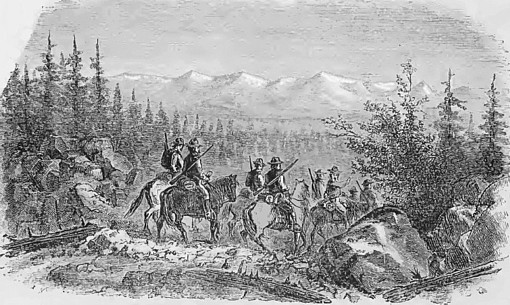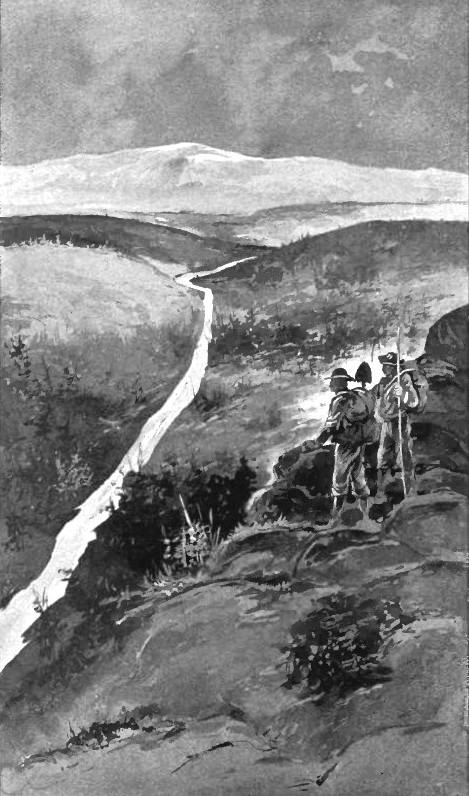The commercially important manganese ore deposits are ordinarily of secondary origin that is; they are concentrated by weathering from manganese minerals more sparsely distributed in rocks. In igneous rocks manganese is always present but only in small amounts. The largest percentages (about 0.36 percent.) are found in syenite and its porphyries and in basalt. Sedimentary rocks may contain manganese in the form of oxide and carbonate. Manganese nodules occur in some deep sea deposits. Analyses of limestones often show a small amount of manganese. In many cherts and jaspers of the sedimentary series manganese is characteristically present as rhodonite or rhodochrosite. In crystalline schist, especially in those of more basic composition, small quantities of manganese are found. In some crystalline schists spessartite (manganese garnet), rhodonite, and piedmonite (manganese epidote) appear in considerable quantities. Finally, rhodochrosite and rhodonite are rather common in ore deposits of hydrothermal or contact-metamorphic origin, and much manganese is present in some metamorphic specular hematite and magnetite deposits.
The manganese existing in the form of rock-making silicates, through the agency of weathering processes, is changed to an oxide. By some process of concentration these minerals are often gathered together into irregular bodies lying in residual clays. The oxides of manganese pyrolusite, psilomelane, polianite, wad, braunite, hausmannite, and manganite normally are found as sedimentary deposits, or as residual deposits. In the first type the manganese has been precipitated in beds or layers of nodules together with iron compounds (with which it is invariably associated), a process at the present time being carried on in the deep sea. The most common ores are pyrolusite and psilomelane, both occurring frequently in botryoidal, reniform, or mammillary concretions. Sometimes these two minerals may form alternating layers in the concretions. Earthy or rough, slaggy forms are also common. Like limonite, they are largely colloid deposits, later converted into crystalline minerals.
At times the manganese
oxides occur associated with iron oxides, and when this is the case the two
are smelted together to form directly an iron-manganese alloy used in making
steel. Manganese minerals also frequently occur as gangue minerals in
connection with
silver ores. A manganese ore to be of commercial value should
contain at least 40 per cent of metallic manganese and be low in percentages
of phosphorus and silica. Manganese has been obtained in the United States
from the following materials: manganese ores, manganiferous iron ores,
manganiferous silver ores, and from the residuum left from smelting the zinc
ores of Franklin Furnace, New Jersey. Manganese ores are also found in
commercial deposits in Virginia, Georgia, Arkansas Arizona, and California.
Manganiferous iron ores are found in Virginia, and at various places in the
Lake Superior iron-ore districts. Manganiferous silver ores are found in the
Rocky Mountain and Great Basin regions, the principal locality being
Leadville, Colorado. The zinc ores of Franklin Furnace, New Jersey, contain
small percentages of manganese, chiefly in the mineral franklinite, and in
the smelting of them the manganese remains in the residuum from which it is
later obtained. At one time New Jersey was the most important source of
manganese at present in the United States. Because of the near zero l
domestic production of manganese ores large amounts have to be imported.
These come largely from Africa, Australia, India and Brazil. The principal
uses of manganese are for making ferromanganese and spiegeleisen. These
compounds, with carbon, are added to molten iron to improve the quality of
steel. Manganese is used also for making other alloys, for making dry
batteries, disinfectants, glass, colored brick, paints, chemicals, etc. It
is used for flux in melting silver and
gold ores. Manganese ores carrying less than 35 percent, of
manganese normally do not command high prices.
Russia: Probably the largest manganese deposits known are those on the
southwest slopes of the Caucasus Mountains in Russia. These deposits are of
sedimentary origin and occur at the base of the Eocene in a flat-lying bed,
below which is Cretaceous chalk. An area of about 22 square miles is
probably underlain by good ore. The average thickness of the ore bed is 6 or
7 feet, and the total amount of ore present is estimated1 at 110,000,000
metric tons.
Brazil. In Brazil, high-grade manganese ores are found in several
districts. The largest deposits are in the State of Minas Gerais, and the
principal districts are Miguel Burnier and Lafayette. The ores occur in a
complex of
granite and crystalline schists and in overlying pre-Cambrian
metamorphosed sediments. Where mining has gone deep enough to encounter the
protore, rocks containing containing rhodochrosite, tephroite, and
spessartite garnet are found. In some of the deposits the parent rock was
evidently a manganese-rich igneous rock, and in others it was a
manganese-rich sedimentary rock. The manganese ores take the form of
concretions, masses, and vein-like deposits of psilomelane in the soft
decomposed rock.
India. Manganese ores are extensively distributed in India and their occurrence and origin have recently been described in a detailed manner by L. L. Fermor. To a large extent these rich ores are formed by the combined replacement and decomposition of Archean rocks containing manganese silicates. In part the rocks are crystalline schists with spessartite and rhodonite, in part probably non-metamorphosed peculiar igneous rocks, one of which, for instance, consists of spessartite and orthoclase with 3.70 percent apatite. To a smaller extent the ores are contained in jaspery quartzite and also in laterite, which is purely residual. In India manganese ores are found at many places where sedimentary rocks of Archean age are deeply weathered. Manganese was present in the sedimentary rocks, and at places the rocks, by regional metamorphism, were converted into schists with manganese, garnet, and rhodonite. Prolonged weathering has resulted in their decay and in the concentration of manganese as oxides near the surface. Many deposits of the first class contain enormous masses of psilomelane, pyrolusite, and braunite; during the process of weathering almost all the silica and alumina have been removed. Fermor finds no evidence that the alteration has been caused by sulphuric acid, but holds that in some manner, not yet fully understood, it has been affected by surface waters. Many of the deposits extend to depths far below the water level and Fermor believes that the oxidation may be of very ancient date, perhaps Archean. In some ways these concentrations by surface waters recall the Lake Superior iron deposits.
Manganese Deposits in
the United States:
Manganese deposits have been opened at scores of places in the United
States. Nearly all of them, however, are of small extent, and the total
amount of high-grade ore still in the ground being only about enough to meet
one year's requirements. Some of the largest deposits of high-grade ore in
the United States are those at Philipsburg, Montana, where, near an
intruding mass of granite, rhodochrosite veins and irregular replacement
deposits traverse limestones and shales. These veins were formerly worked
for silver. Near the surface and extending to depths of 200 feet or more,
the rhodochrosite is altered to oxides. Manganese carbonate veins at Butte
also are mined for manganese.The largest deposits of low-grade ferruginous
manganese ore are in the Cuyuna range, Minnesota. These deposits are the
weathered outcrops of sedimentary beds. Deposits of manganese ore are found
also in Arizona, Arkansas, Colorado, Nevada, New Mexico, Utah, Virginia and
other States.
In California small deposits of secondary manganese ores occur in areas of the radiolarian cherts or jaspers of the Franciscan formation. In Arkansas residual ores have been mined at Batesville, where they occur both in the Cason manganiferous shale, of upper Ordovician age, and in clay derived from this formation. In the Appalachian region small deposits occur in granites and schists of the Piedmont region, but chiefly in the Paleozoic sediments of the Cambro-Silurian belt that is, in the general area of the residual iron ores. At the Crimora deposit, in Virginia, the ore is found as "masses of various sizes scattered through variegated clays in an elliptical basin in a canoe-shaped syncline of the Cambrian quartzite," into which the manganese penetrates as dendritic forms and crystalline coatings. The manganese deposits of the Appalachian region occur in a decomposed surface zone of many different rocks, but most of the deposits are associated with the top stratum of an impervious cambrian quartzite overlain by limestone. In central Texas, in Mason, Llano, and San Saba counties, oxidized manganese ores occur as products of weathering of crystalline schists containing spessartite, piedmontite, and tephroite. The largest part of the manganese obtained in the United States has been derived from ores of the Lake Superior region, where manganese occurs as oxides associated with specular hematite, and from the zinc residues of the great zinc ore deposit of Franklin Furnace, New Jersey, where the manganese is contained in the franklinite associated with zincite.
Return
to Metal Ores Page:
Precious and Base Metal Ores


